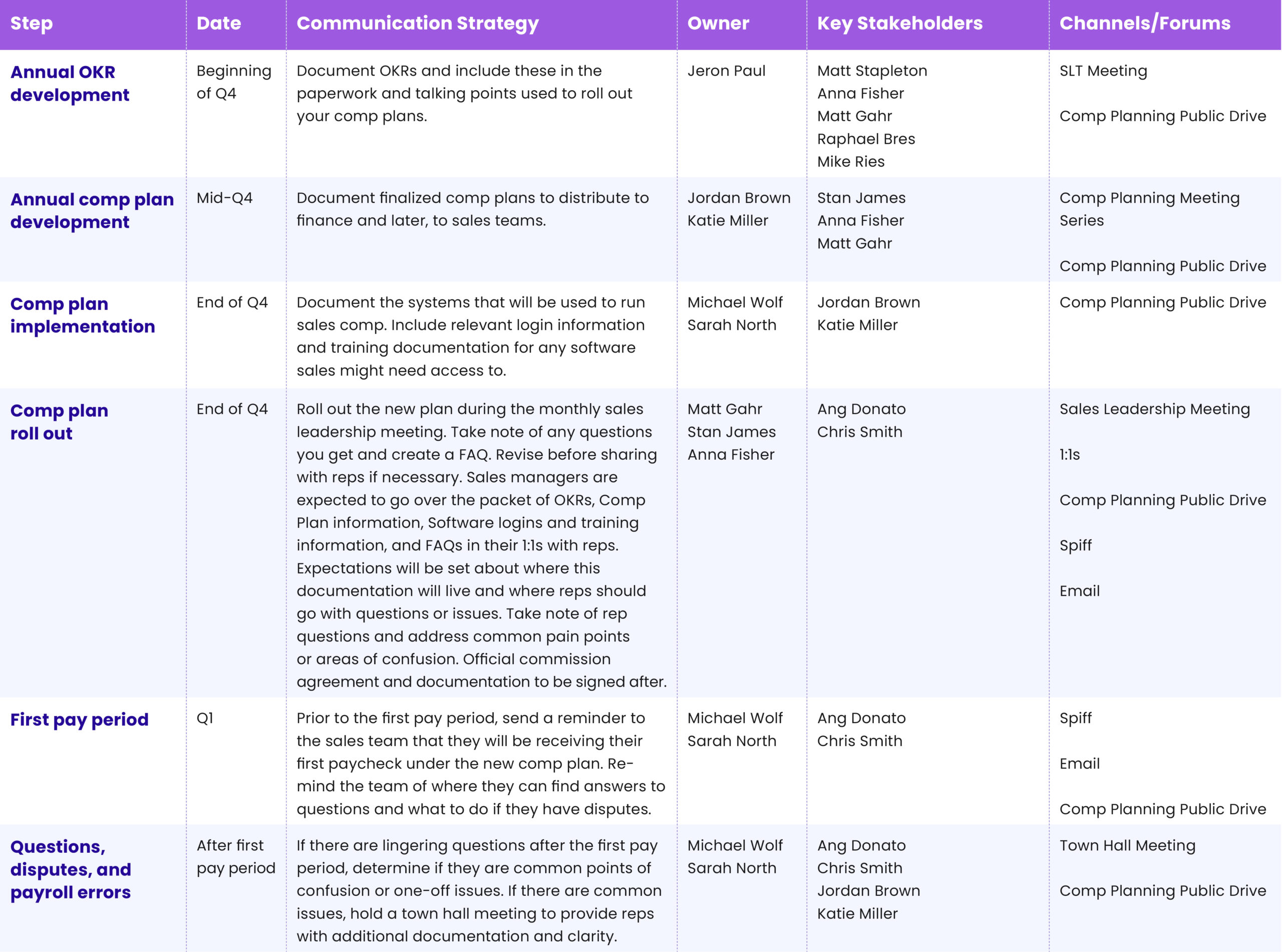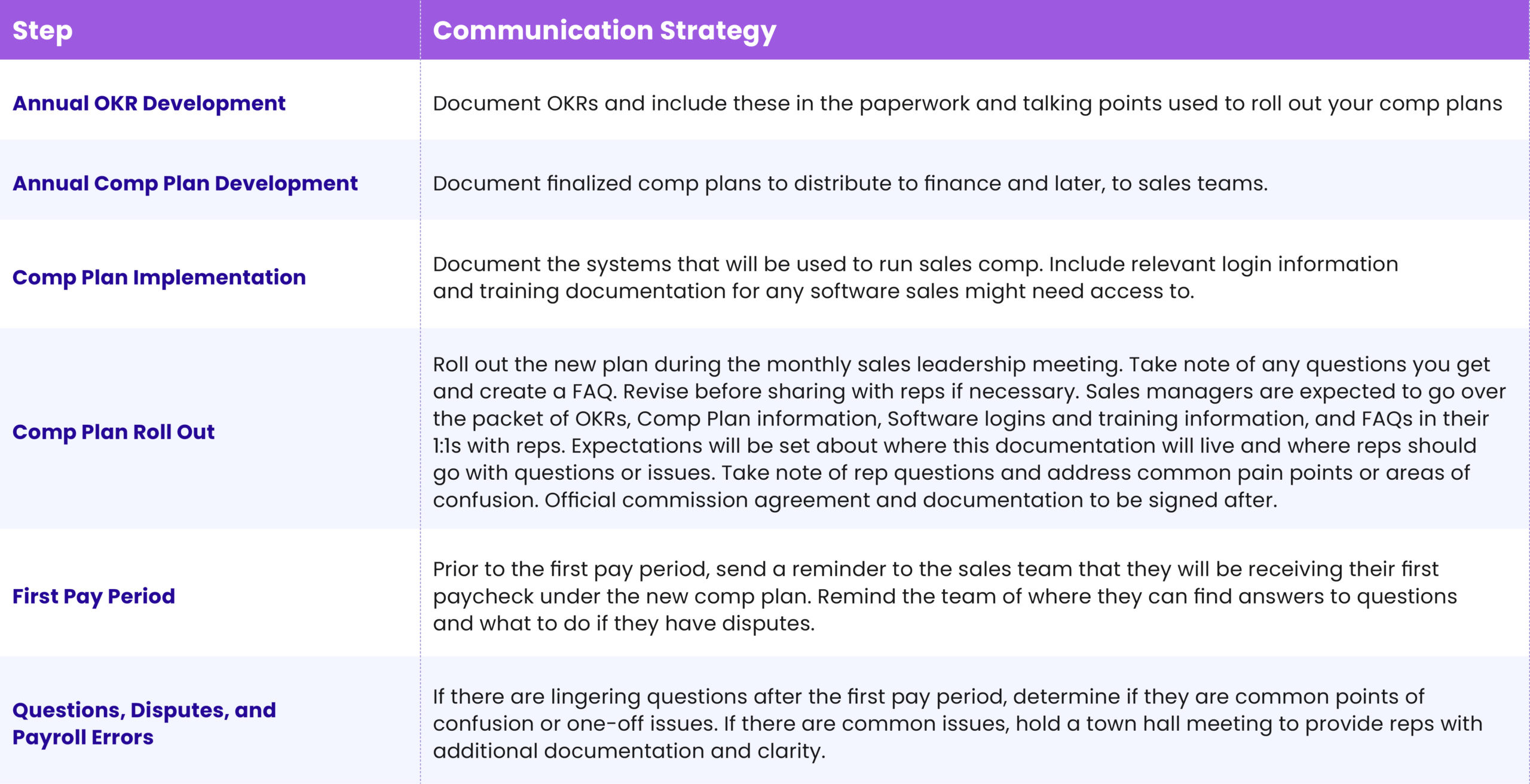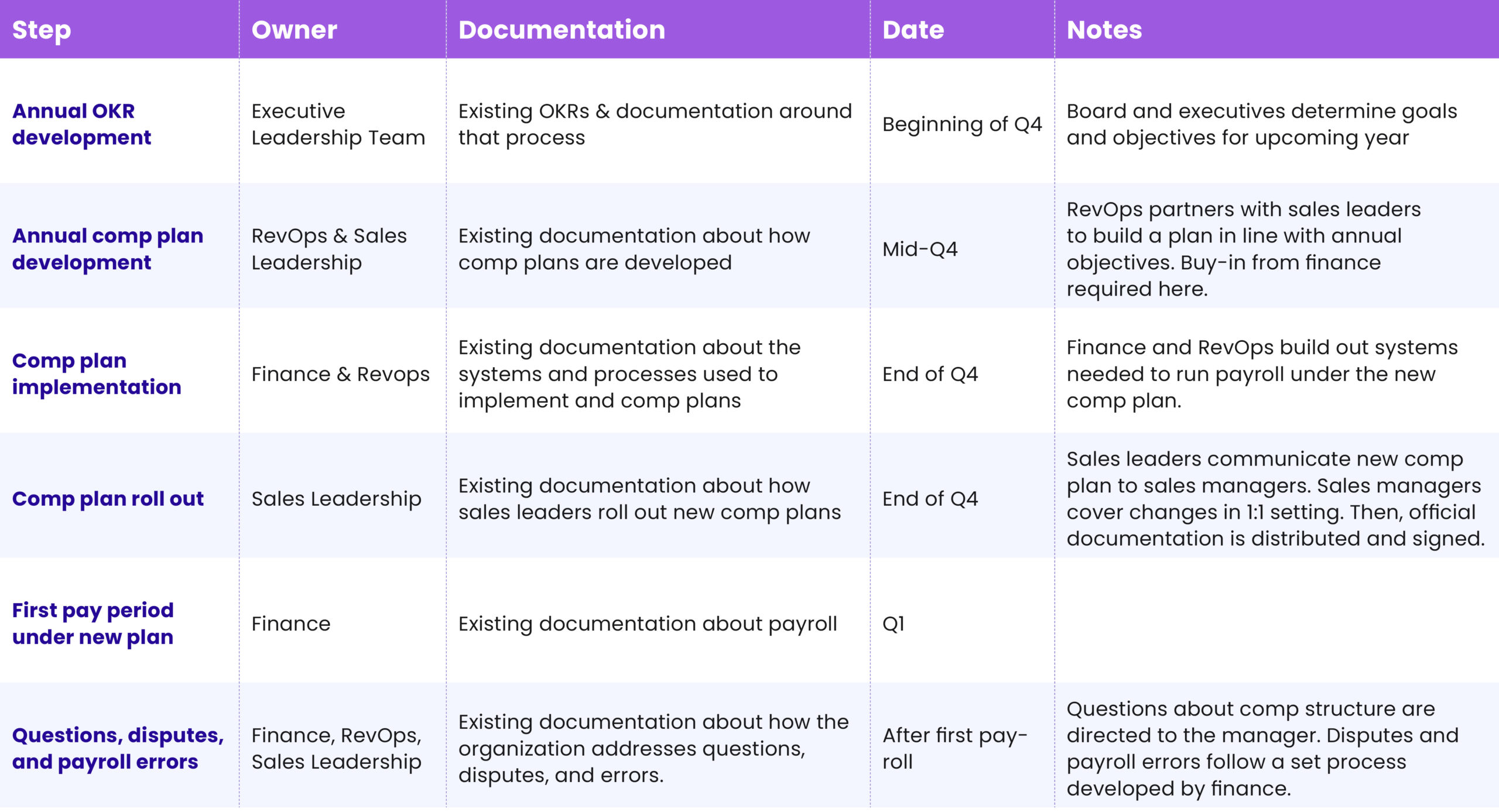Developing an effective sales compensation plan requires a lot of brain power. It makes sense to focus on behaviors you’d like to incentivize, or pulling certain levers to impact other components of your sales engine. But how much time do you spend ensuring reps actually understand how their comp plan works?
Too many organizations pull out the big guns to build comp plans, but fall short when it comes to clearly communicating compensation changes to reps. This is a fatal flaw that can render even the most brilliant comp plan useless.
When reps have to do the heavy lifting to figure out how they’re getting paid, that means they have less time to spend on sales activities . Reps spend just 33% of their day talking to prospects, while the rest is devoted to internal or administrative tasks (source). This confusion dampens productivity and undermines the very comp plan you designed to motivate reps in the first place.
The only remedy is a formal incentive communication strategy. Developing a communication process for sales compensation can improve employee satisfaction, boost pay transparency, and relieve your reps of a massive administrative burden.
There is no one-size-fits all approach to developing this process. What works best for you will depend on how your organization is structured, what your comp plans look like, the culture of your sales team, and so much more. This post will show you how to deconstruct your current sales compensation process to ultimately build a more effective incentive communication strategy. Let’s dive in!
1. Document your current sales compensation processes.
The best way to start is by looking at your current sales comp process. Work with other department heads or stakeholders in Sales Ops, RevOps, Finance, or HR to map out every aspect of sales compensation at your organization. Start from commission plan development all the way through how you handle disputes.
Determine and document which person or department is directly responsible for executing each piece of the process and include links to any documentation that already exists.
It might look something like this:

2. Map out an incentive communication step to align with each step of your sales comp process.
Now that you have your existing sales compensation workflow mapped out in front of you, we recommend going back into each step to create a corresponding communication plan.
Good questions to keep in mind during this exercise:
- What does our communication process look like now?
- Who owns each step?
- What information do we need to share with reps at each step?
- Which steps cause the most friction for reps? When do we receive the most questions or negative feedback?
- Which steps cause the most friction on the backend? When do we have the most trouble finding information?
Here’s an example of what that might look like:

Don’t complete this step in a silo. There are many key stakeholders involved in sales comp management, including your sales reps. It’s important to get everyone’s perspective and feedback while creating your incentive communication process.
3. Refine your documentation and communication channels.
Once you’ve aligned your incentive communication plan with your existing sales compensation processes, it’s time to go back in and refine the details. During this step be specific about establishing clear workflows, owners, and distribution channels. Ask yourself:
- Who will be responsible for creating this information?
- Who will be responsible for distributing this information?
- Where is this information going to live?
- How will reps access this information?
- When is it most important for reps to access this information?
Here’s an example of that that might look like:

This example is a watered down version of what you might create for your team. Remember, you want this document to clearly show what the team can expect at any step of the comp process, where they can find important information, who they should go to with questions, and when they can expect certain documents to be shared.
4. Roll out your new incentive communication strategy.
By now, your shiny new incentive compensation communication strategy should be functional and actionable. You’ve filled the informational gaps with new or improved resources and set expectations around incentive communication. Stakeholders are aligned on what, how, and when to communicate with reps. Now it’s time to actually roll everything out to your sales team.
For a successful implementation, we suggest actually sharing your communication strategy with reps, including the detailed documentation created using this framework.
Think of your incentive communication document like a roadmap for sales teams. Not only will it help them understand the timing around certain steps and where important documentation lives, it also gives them more insight into how and why plans are created in the first place.
5. Test, collect feedback, and iterate.
You may find that after all the planning, your incentive communication strategy still contains gaps. That’s not only fine, but expected. You can’t fix a broken system with unproven theories— implementing new improvements is the only way to see what actually works.
Make it as easy as possible for reps to provide feedback. Use the tools you already have, like:
- Anonymous surveys in the weeks following implementation, or events where you’ve previously seen a lot of questions or disputes
- A “suggestion box” form where reps can share any questions, comments, ideas, or concerns
- Team meetings to devoted to incentive communication
- 1:1 with managers, who proactively ask if anything was confusing during the last pay cycle.
Whatever you do, make sure these conversations are consistent. Your incentive communication strategy shouldn’t be set in stone, but a work in progress you continually revisit and revise— both independently and with other stakeholders— until you get it right.
Final thoughts
Any time or resources you invest in sales compensation will ultimately go to waste without a formal process created to distribute and communicate the details to your teams.
Build your incentive communication strategy in steps, testing and refining along the way. Aim for progress over perfection— it’s a more realistic goal, and seemingly small changes can vastly improve sales commission clarity for your reps.
About Spiff
Spiff is a new class of commission software that improves trust across organizations by automating commission calculations and motivating teams to drive top-line growth. With an intuitive UI, real-time visibility, and seamless integrations with the systems you already use, Spiff is the first choice among high-growth businesses.






